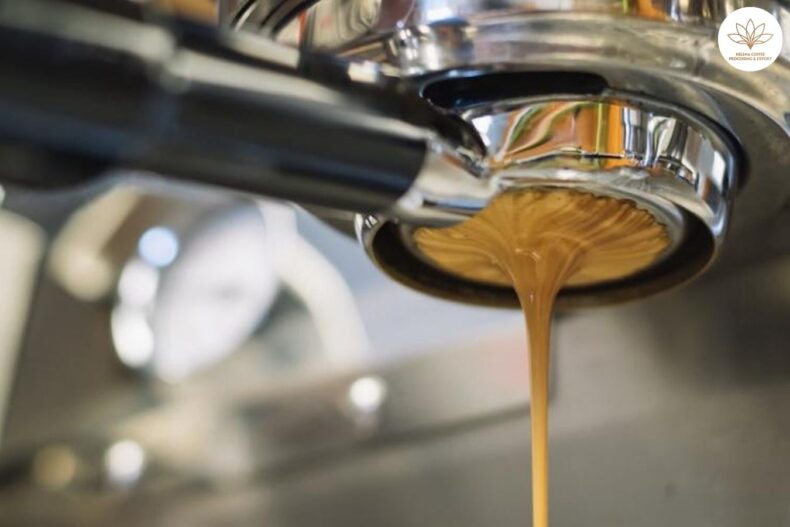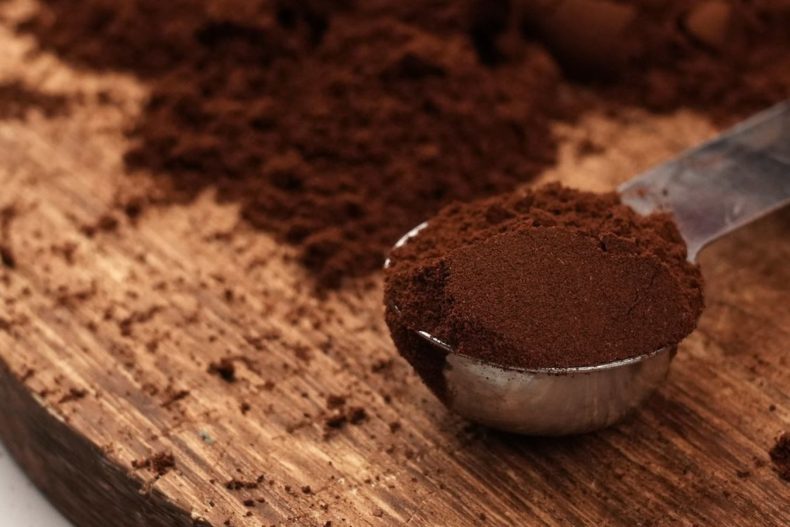
We will not fall short if we say that the grinder is one of the most important parts of any coffee maker. Without a high-quality grinder, it is difficult to achieve a uniform grind size distribution, which can affect extraction quality .No matter how powerful your grinder is, cleaning and maintenance are vital to getting the most out of it. By regularly maintaining your burrs and cleaning your grinder, you’ll ensure you make consistent, delicious coffee time and time again.
There are several techniques to clean the mills. To learn about some of the best, I spoke with two coffee professionals from Fiorenzato , a manufacturer of premium coffee grinders. Read on and find out what they told me.
Why is it important to clean the Coffee Grinder?
During the roasting process, heat causes coffee beans to give off gases as their cellular structure breaks down and becomes more porous. For this reason, roasted beans are much more brittle than raw green coffee, which home and commercial grinders have difficulty breaking down.
On the other hand, roasted coffee contains oils. These oils are lipids that naturally pass to the surface of the bean during roasting. Marzia Viotti is a technical trainer at Fiorenzato . She explains how and why the oils remain in the grinding chamber.
“The oils in the coffee stick to the teeth of the strawberries,” he explains. “Over time, if left there, the smell and taste of stale coffee will affect any new coffee that is ground.”
The teeth of mill cutters are small ridges and grooves found around the edge and surface of both tapered and flat cutters. Although the angled design of these teeth helps grind coffee evenly and quickly, it also means that oils and very fine coffee grounds (known as fines) stick to them easily. It’s not just strawberries that are affected, either. Over time, coffee grounds build up and can cause clogs, which can lead to mechanical problems.
“Extraction and flavor are affected by any lack of cleaning,” says Marzia. “If old coffee gets stuck in the spout, the coffee will not come out correctly, so the performance of your grinder could be affected.”
Blockages in the grinder’s outlet tube (the pipe through which coffee falls into the grounds container) can contaminate fresh coffee with old grounds. Thus, the flavor and aroma are negatively affected.
“In addition, it will impact the grinding performance and the grinding speed will be lower.” adds Marzia.
What is grind retention?
Ground retention is when the ground coffee remains inside the grinding chamber and mouthpiece. Strawberries always retain a certain amount of coffee but it varies depending on their shape. A certain amount of retention can be beneficial to reduce static and maintain a constant grind flow but high levels are detrimental. If old grounds are not removed regularly, coffee freshness and grinder performance are compromised.
“Coffee retention is a very popular topic now” says Marzia. “This is because coffee lovers are more aware than ever of the importance of always having freshly ground coffee.”
Flat burrs tend to hold more coffee grounds than conical burrs due to differences in the grinding mechanism. In flat burrs, coffee is ground between the top and bottom burrs aligned horizontally. These push the ground coffee laterally towards the inner chamber and the mouthpiece.
On the other hand, in conical burs, the upper bur is located “inside” the lower one. This means that gravity pushes the coffee grounds through the chamber and spout and, as a result, the coffee maker retains fewer grounds.
Giulia Bagato is the marketing director of Fiorenzato . She explains how the company’s Pro line of commercial and consumer grinders have been designed to mitigate grounds retention.
“The grinding chamber and its components have been redesigned to reduce the interior space, so there is less ground coffee residue inside.”
The new design allows baristas and home brewers to easily remove the top burr for cleaning and maintenance. Once the hopper is removed, the user can extract the upper burr using two clips located on both sides of the grinding chamber.
To separate the burr set from a commercial or professional grinder, users would typically have to unscrew the housing from the grinding chamber. This takes more time and could be detrimental to service in a busy coffee shop.
Clumping and cleaning
Because ground coffee contains moisture by default, it often sticks together, forming small clumps. This is also due to the static electricity that is generated when the burs rotate continuously at high speed.
This clumping can cause a number of problems, the main one being uneven distribution of grounds in the coffee maker or portafilter . In turn, this is likely to generate channeling, which is when water finds the path (or channel) of least resistance through the coffee bed.
Channeling means that the water avoids the most compact areas of the coffee and causes a combination of under- and over-extraction, resulting in more unwanted flavors and aromas in the cup.
“In each Fiorenzato mill, upon request, there is a lump crusher.” explains Giulia. “It is a small tool that prevents the coffee from clumping and allows static electricity to disperse.”
“In the Pro line, our clump crusher has been remodeled to be more effective against clumps and allows users to clean the entire grinding chamber more easily.”
The grinder is especially useful for grinding espresso coffee , which requires a finer grind. Lumps form more frequently when grinding finer.
“Other mill models have the lump crusher outside the grinding chamber, at the end of the nozzle,” explains Marzia. “In the Fiorenzato Pro range, the lump crusher is located at the beginning of the nozzle. This means that coffee grounds can pass through more easily.”
This design decision helps minimize static, preventing further clumps from forming and reducing the amount of dust and chaff that accumulates. For busy cafeterias, this cleaning helps keep the workplace clean, but can affect service during busy periods.
Grind fresh coffee
Most flat burr grinders can hold between one and twelve grams of coffee per dose. This makes it difficult to know how much of the coffee you are brewing is fresh and how much is stale.
Once coffee is ground, its flavors and aromas begin to degrade as it oxidizes. This process causes the coffee’s more subtle characteristics to fade and disappear. The heat generated by the grinder burrs also causes the ground coffee to lose flavor even more quickly. Purging the grinder of stale beans helps ensure that the coffee you serve is fresh and as intended.
In addition to improving the experience, purging allows baristas to work more efficiently. Ground retention prevents them from making an effective adjustment because the retained grounds can be expelled into the portafilter after a change, without the new grind adjustment having taken effect.
This makes it difficult to follow, and as a result, the barista will over- or under-change the grind. This means your shots end up being too slow or too fast, and taking longer to find a sweet spot for extraction . For this, it is recommended to purge up to 12 g of coffee after making changes to the grind setting.
Burr quality also affects grind retention and extraction quality. The sharper and more robust they are, the longer the grinder will perform at its maximum.
“Fiorenzato chose Bohler M340 food grade steel for our cutters,” says Giulia. “It is important that the materials in contact with the coffee do not release harmful substances and that the hardness of the material of our burs guarantees a longer lasting sharpening.”
Some tips cleaning and maintenance coffee grinder
Cleaning the grinder regularly is key: it is absolutely necessary to maintain the quality of the coffee.
Marzia says: “Coffee goes rancid after three days, so the coffee grinders should always be cleaned after at least three days.”
“It can be intimidating for baristas to clean grinders, especially new ones or those with less experience.”
Despite these concerns, cleaning and maintaining the grinder is important and helps achieve the best coffee brewing results. To start, it is best to ensure that the grinder is turned off and disconnected from any power source.
“You don’t need any tools to clean the Fiorenzato Pro grinders,” says Marzia. “With some grinders, when you change the burrs, it’s hard to separate the chamber because there’s a thread inside.” With the Pro, she notes, the grinding chamber is completely removable, making it easier for the user to access.
Remember that separating a set of burrs often breaks the thread and causes the grind setting to change. Now, some grinders, like the Fiorenzato Pro, have a removable top burr that allows you to keep the grind settings intact during extraction and cleaning.
Marzia suggests another way to clean the grinder without losing settings. “You can clean a grinder easily with a small vacuum and you don’t lose the grinding point,” she says.
Additionally, “if using a dark roast, I suggest cleaning the grinder daily with a vacuum cleaner. Likewise, strawberries should be cleaned with professional products designed for strawberries every three days.”
These professional products usually come in the form of food-grade granules that can be ground and put through the mill, much like coffee beans. Thus, they absorb the oils from the strawberries and expel the retained grounds.
Once this is done, purging the mill by passing a few grams of old grains helps remove any remaining fragments of granules.
“ Espresso is usually very oily since the beans are ground finer and are usually darker,” explains Marzia. “Cleaning grinders designed to extract espresso , like Fiorenzato’s Pro range, is even more important, especially in a high-use environment like a coffee shop.”
In busy periods or when you have little time, simply clean the inner chamber and mouthpiece with a soft bristle brush. However, Marzia recommends that for more intense cleaning, professional cleaning tablets are the only way to ensure that the grinder is completely clean.
“With a simple brush you will not remove the oils ,” he says. “Professional products will do this and can keep strawberries cleaner for longer.”
If you follow the advice in this article and make sure you use professional-quality products, at least with some regularity, you will be able to reap the benefits of a clean, well-maintained grinder.
FAQs:


